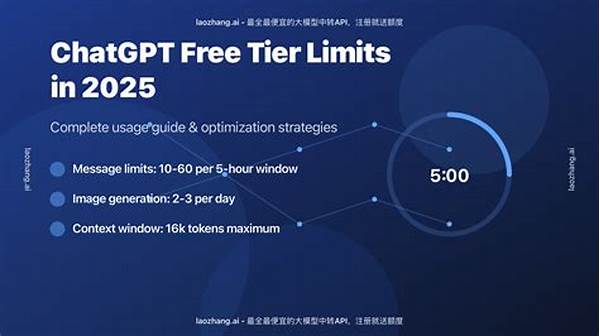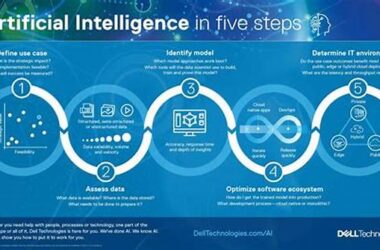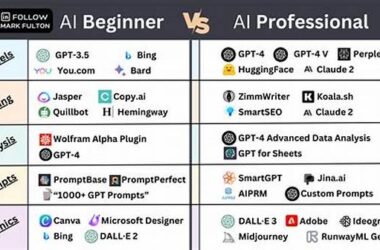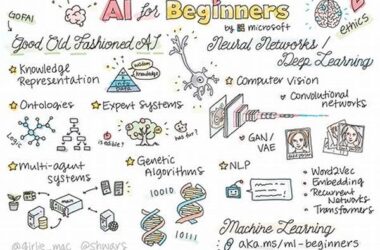- The Purpose Behind the Free Tier: More Than Meets the Eye
- H3: Motivating the Upgrade
- Evaluating Needs Versus Wants
- Investing in the Future: Why Upgrading Matters
- Real-World Examples: Is the Free Tier Enough?
- Understanding the Benefits of Going Beyond the Free Tier
- H3: Making the Leap to Paid Tiers
- The Importance of Keeping Pace with Technological Advances
- Illustrations of the Free Tier’s Limits
H1: Is the Free Tier Enough? The Unexpected Limits of Basic AI Services Revealed!
Read More : Ai Beginner
In the fast-paced world of artificial intelligence, where cutting-edge technology seems to evolve at the speed of light, many providers offer free tiers to attract customers to their AI services. At first glance, these free tiers appear to be golden tickets to a world of innovation for entrepreneurs, startups, and hobbyists who are eager to integrate AI into their operations without breaking the bank. But is the free tier enough? The unexpected limits of basic AI services revealed can be a stark realization for those who leap before they look.
Free AI services sound like a dream come true, especially for small businesses and app developers looking to incorporate AI capabilities without incurring large costs. With the lure of AI-driven chatbots, image recognition, and data analytics, the free tier seems like a savvy option for those venturing into AI technology. However, as alluring as these offers sound, the limitations can often overshadow the initial excitement.
For starters, the restrictions on usage can be a significant hurdle. Free tiers typically offer limited API calls per month, capped processing power, and reduced functionality compared to their premium counterparts. While this might be sufficient for testing and initial development, it can lead to frustration as projects scale up. Users might find the free tier’s elasticity doesn’t stretch as far as their ambitions, leading them to wonder, “Is the free tier enough? The unexpected limits of basic AI services revealed!”
Moreover, free tiers often lack the customer support and tailored assistance one might require when integrating AI into complex systems. The idea of learning independently is terrific until you hit a wall with a complex problem, and your only option is to comb through forums and documentation for a solution. It’s the classic narrative of “You get what you pay for,” but with the unique twist of AI’s intricacies mixed in.
H2: Understanding the Boundaries of Free AI Services
AI providers design these free tiers as a gateway drug into their more lucrative offerings. They serve as a sandbox environment, a playground for tech enthusiasts to tinker without spending a fortune. While this can be effective in initial learning stages, the inevitable reality check of unexpected hurdles and limitations can be discouraging. The question, “Is the free tier enough? The unexpected limits of basic AI services revealed!” begins to haunt entrepreneurs who suddenly need more firepower to support their growing technical needs.
—
The Purpose Behind the Free Tier: More Than Meets the Eye
AI services offering a free tier are not just expressions of goodwill but strategic moves to onboard new users. Their primary goal is to entice customers with a taste of what lies beyond the basic settings. As the user explores, the curiosity piques at the extended features housed safely behind paywalls.
Understanding why AI companies offer these free tiers is crucial. It’s not simply to give everyone a free ride but rather to establish a relationship. They want to cultivate trust and reliance on their technology. By allowing users to experience the basics, they aim to showcase the potential improvements those users could see if they decide to upgrade.
H3: Motivating the Upgrade
Free tiers often lack the full suite of benefits offered by premium editions. Limited access to advanced algorithms, reduced customer support, and lower performance levels act as a subtle push towards paid versions. This practice is an artful balancing act of maintaining interest while strategically handicapping the service to fuel the user’s desire for more comprehensive capabilities.
For many who ask themselves, “Is the free tier enough? The unexpected limits of basic AI services revealed!” the epiphany arrives at a juncture of need versus want. As they delve deeper into AI utilization, the allure of enhanced productivity and efficiency becomes hard to ignore. At this intersection, many pivot from curiosity to commitment.
Evaluating Needs Versus Wants
Businesses must accurately assess whether the free tier can sustain their demands or if they must transition to paid services to harness AI’s full potential. This decision should be based on an honest evaluation of needs versus wants. Companies must consider the cost-benefit ratio, weighing the potential ROI against the limitations of the free tier.
Investing in the Future: Why Upgrading Matters
While free tiers provide an excellent initial exposure to AI, upgrading is often essential for businesses aiming to scale. The investment into premium features can unlock higher efficiency and better results, ultimately driving success. As industries become more tech-centric, the investment in advanced AI tools becomes a strategic necessity.
—
Real-World Examples: Is the Free Tier Enough?
Understanding the Benefits of Going Beyond the Free Tier
While AI tech is enthralling, one can’t rely solely on the free tier for sustained growth. The unexpected limits of basic AI services revealed through real-world applications show that strategic investment in AI is not just about accessing technology but about unleashing possibilities.
H3: Making the Leap to Paid Tiers
For those realizing the limitations of free tiers, transitioning to paid options is often the next logical step forward. This shift involves assessing potential benefits and aligning them with both immediate needs and long-term aspirations. The decision becomes less about affordability and more about value — maximizing capabilities to truly lever AI’s power.
The Importance of Keeping Pace with Technological Advances
The world of AI is dynamic and ever-evolving. As technology progresses, so do the demands and expectations from users. To remain competitive, tech-savvy, and ahead of the game, it’s essential to adopt tools that not only keep pace with innovation but also drive it. Companies need AI systems that can adapt, learn, and grow with them.
In conclusion, while free tiers serve as valuable introductions to AI capabilities, they come with inherent limitations that can stifle growth. Businesses interested in maximizing their use of AI must eventually confront the question: Is the free tier enough? The unexpected limits of basic AI services revealed suggest that the answer is often no — pushing many towards necessary upgrades.
—
Illustrations of the Free Tier’s Limits
H2: Visualizing the Boundaries: 10 Illustrations of AI’s Free Tier Limits
Understanding the limits of free-tier AI services is easier when visualized through practical examples:
AI’s free-tier offerings are but a teaser and often fall short of supporting more demanding applications. The creative value proposed by paid services invites consideration not only of what is gained, but of what cannot be achieved without stepping beyond these limits.
Exploring these constraints offers a sneak peek into why comprehensive AI services are so highly sought. Understanding both the scope and limitations prepares users better when deciding how deeply they wish to integrate AI technologies into their operations. Is the free tier enough? The unexpected limits of basic AI services revealed answer with clarity and experience.



